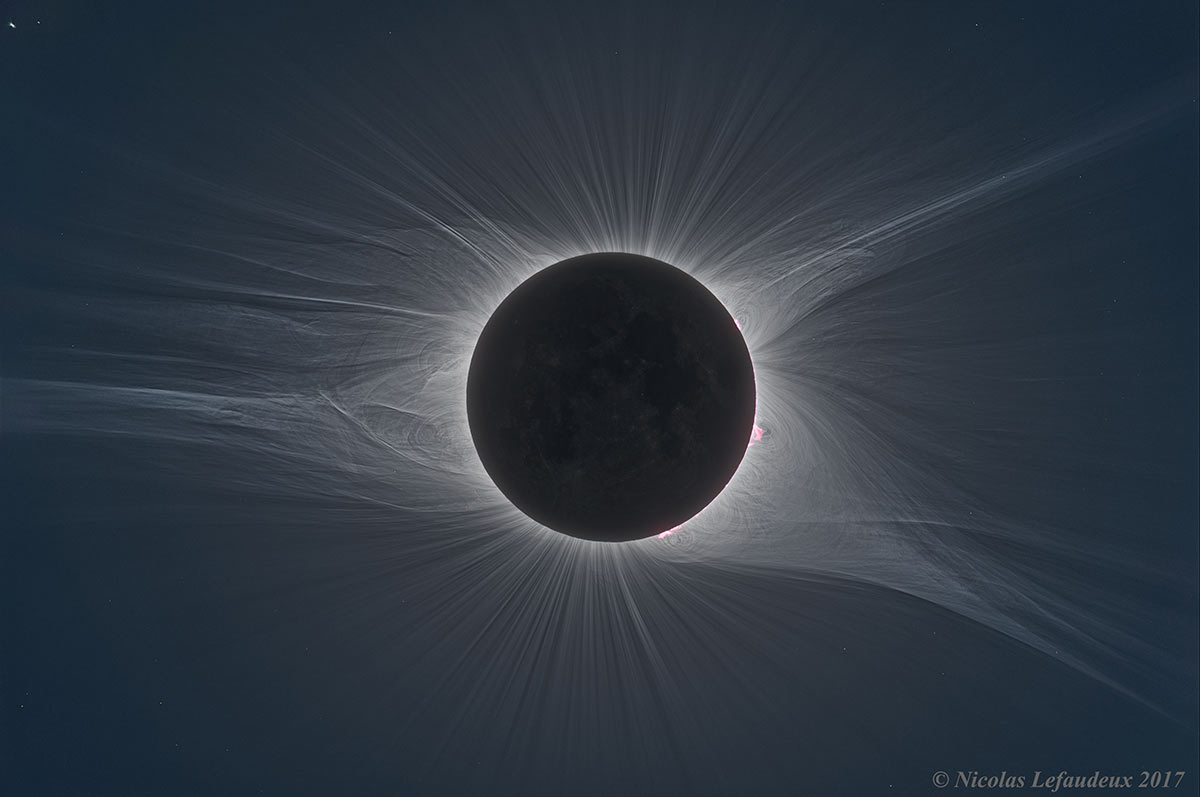How Hot is the Sun?
The Sun is about 10,000 degrees Fahrenheit, or 5,600 degrees Celcius. The center of the Sun is its hottest point, at about 27,000,000 degrees Fahrenheit, or 15,000,000 degrees Celcius.
The temperature of the Sun is hottest in the center, and gradually gets lower as you reach the surface. However, the temperature of the Sun rises again from the surface outward to its atmosphere.
The Solar Atmosphere is the Sun’s uppermost layer, called the Corona. This feature can be seen as a bright halo of light surrounding the Sun during a solar eclipse. The Corona of the Sun can reach millions of degrees.
Total Solar Eclipse Corona in HDR. Astronomy Picture of the Day (APOD) Nicolas Lefaudeux.
The high temperatures found in the Corona are still a mystery to scientists. Even though the Sun’s atmosphere is far from its surface (the Corona starts around 10,000 km above the solar photosphere), it is hundreds of times hotter than the surface of the Sun.
The NASA IRIS mission found ‘packets’ of hot material that travel from the surface of the Sun to the Corona, where these heat packets explode and release energy as heat.
The coolest parts of the Sun are the dark areas of magnetic disturbances erupting on the photosphere, also known as sunspots. Sunspots are usually about 6,700 degrees Fahrenheit.
Related Post: How to Photograph a Solar Eclipse
What is the Sun made of?
The Sun is made up of hydrogen and helium gases (about 92% hydrogen and 8% helium). It also contains small amounts of other elements like carbon, oxygen, nitrogen, magnesium, and iron.
Nuclear fusion takes place in the Sun’s core, where it burns millions of tons of hydrogen a second. This process creates incredible amounts of energy, including the heat and light of the Sun.
Nuclear fusion turns hydrogen into helium at the Sun’s core. NASA.
The Sun’s surface is covered in intense magnetic fields. These magnetic fields affect the charged particles in the Sun’s Corona to form helmet streamers, coronal loops, and polar plumes.
Eventually (in about 5 billion years), the hydrogen fuel of the Sun will run out. When this occurs, the Sun will begin to die.
Solar Flares and Sunspots
Solar Flares are localized, intense eruptions of electromagnetic radiation that occur in the Sun’s atmosphere. A solar flare occurs in an active region of the Sun that may include coronal mass ejections (CMEs).
This solar phenomenon is believed to take place when the magnetic energy in the Sun’s atmosphere accelerates charged particles in the surrounding plasma. The result is an electromagnetic radiation emission event.
Sunspots are dark regions of strong magnetic fields on the Sun. They can ignite eruptive disturbances like CMEs. These regions appear darker because they are much cooler than the surrounding photosphere.


